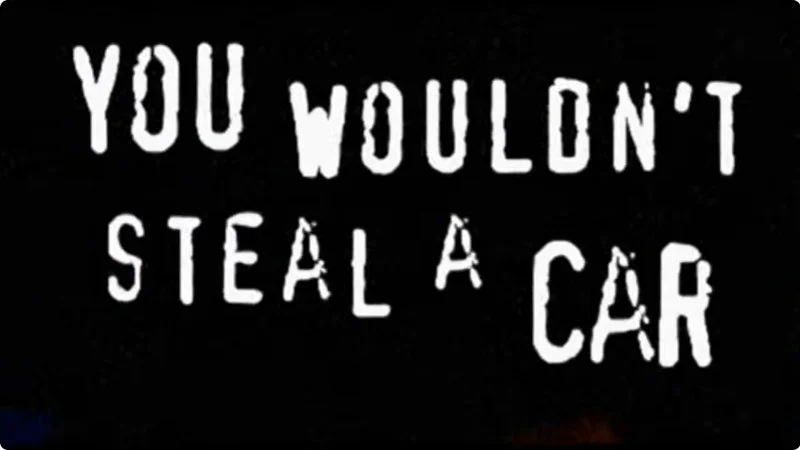
Irony Alert: Infamous “You Wouldn’t Steal a Car” Anti-Piracy Ad May Have Used a Stolen Font
In a twist that's dripping with irony, the iconic "You Wouldn't Steal a Car" anti-piracy campaign from the early 2000s may have inadvertently used a pirated font. Yes, the very ads that decried digital theft might have been guilty of intellectual property infringement themselves. The story is making waves online, sparking both amusement and debate about the complexities of copyright in the digital age.
The campaign, a joint effort by the UK's Federation Against Copyright Theft (FACT) and the Motion Picture Association of America (MPAA), featured unsettling imagery of people stealing everyday items, culminating in the act of downloading a pirated film. The message was clear: digital piracy is akin to traditional theft. But now, it seems the campaign might have had a skeleton in its own closet.
The font in question is believed to be XBAND Rough, a free-to-download alternative, almost identical copy of FF Confidential, a font created by Just Van Rossum in 1992. Van Rossum, whose brother Guido van Rossum created the Python programming language, found the revelation "hilarious."
"I knew my font was used for the campaign and that a pirated clone named XBand-Rough existed. I did not know that the campaign used XBand-Rough and not FF Confidential, though. So, this fact is new to me, and I find it hilarious," Van Rossum told TorrentFreak. According to a Bluesky user named Rib using the Wayback Machine, confirmation exists because the XBand Rough font is embedded in a 2005 PDF file hosted on the official anti-piracy campaign website.
While no official comments have been received by FACT or MPAA, the internet is abuzz with reactions. The incident highlights the often-blurred lines of **intellectual property** in the digital realm and raises questions about the responsibility of creators to ensure they are not inadvertently contributing to copyright infringement.
The discovery was made by internet sleuths, who scrutinized the font used in the ad and marketing materials. While the evidence is compelling, it remains a point of discussion. Regardless, the irony of an anti-piracy campaign potentially using a pirated font is undeniable.
This incident raises a crucial question: in an era where digital assets are easily copied and shared, how can we ensure that creators are properly compensated for their work while also fostering a culture of accessibility and innovation? The web of modern intellectual property is so labyrinthine as to be almost impossible to navigate without coming a cropper somewhere.
What do you think about this ironic twist? Does it change your perception of the anti-piracy campaign? Share your thoughts and opinions in the comments below!